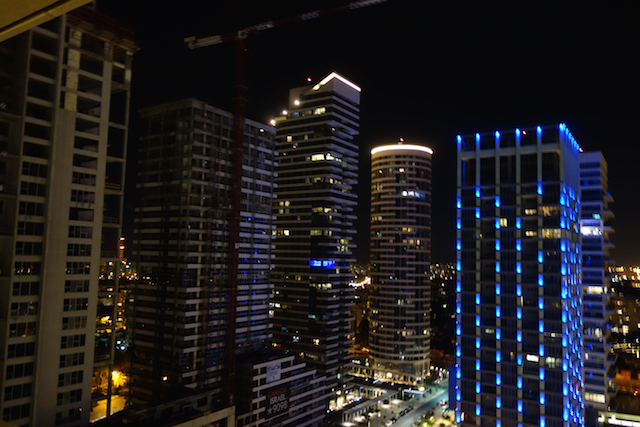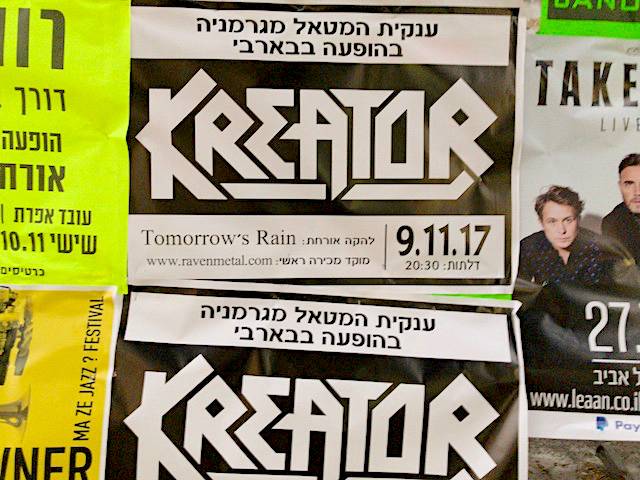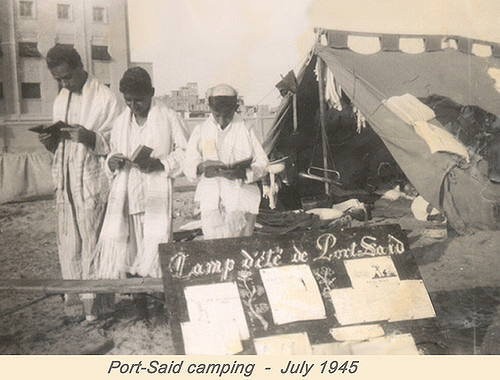Sometimes, after we’d made the turn off Slifer Valley Road and passed through the covered bridge, my mother would take her right hand off the steering wheel, point out the passenger-side window, and inform me, “That’s where the glass house is.” Even though I never managed to see this marvel, I never tired of her commentary. Because I needed to know who couldn’t throw stones.
Although I was extremely verbal as a pre-schooler, idioms were a source of frustration. I took almost everything literally. And that was a problem, because my mother was extraordinarily fond of the Pennsylvania Dutch folk wisdom she’d grown up hearing as a child. Scarcely a day went by without her invoking a saying or two that left me baffled.
That’s why I treasured the few I’d figured out, beacons of hope amid the darkness of figurative language. And I was particularly proud of the moment when I’d finally made sense of the statement that “people in glass houses shouldn’t throw stones,” because I’d made the connection all by myself.
One day, when I was three or so, my mother had reverted into tour-guide mode, as she frequently did while traversing the lovelier parts of our Upper Bucks landscape, and directed me towards the location of this “glass house”. My overactive mind, desperate to make meaning out of confusion, did the rest.
While I had certainly a few dumbed-down instances of Modernist architecture in the nearby cities of Allentown, Bethlehem and Easton and also spied the real thing on family trips to New York City — my first sight of the Twin Towers looming in the distance made a huge impression on me — I had yet to see examples of how that no-frills aesthetic could be translated to a single-family dwelling. Yet that didn’t stop me from speculating.
As I would gaze out our green Pontiac Catalina’s back window at the place where this special house supposedly stood, obscured by the trees that always seemed to compromise whatever views the rolling hills made possible, I developed an elaborate fantasy of a structure in which every wall was transparent, then worried, inevitably, about what that would mean for activities like going to the bathroom.
It wasn’t until I was five that I learned how wrong I had been about the idiom. My mother was listening to coverage of the Yom Kippur War on the radio one afternoon — she didn’t watch much television news — when she suddenly blurted out, “People in glass houses shouldn’t throw stones.”
Since I could barely comprehend what was happening in literal terms — 1973 was a difficult year for five-year-olds, with confusing stories about the Vietnam War and peace process, the Pattie Hearst kidnapping, the OPEC oil embargo etc. — this statement turned my world upside down. Although I immediately realized that the participants in the conflict couldn’t all live in glass houses, I had no idea whom my mother meant to admonish with what I now understood to be an idiom with potentially broad application.
I distinctly remember how disorienting it felt having to revise my conception of the world on the fly. Because I was the sort of child who tended to construct entire worlds from a single discovery, I had a lot invested, by this time, in my literal interpretation of “people in glass houses shouldn’t throw stones.” Indeed, it had evolved into an antipathy towards any building with too many windows. No matter how compelling such a structure might be, that didn’t justify putting its occupants at risk.
This prospect of total transparency was both thrilling and scary to me. Although I was not a stone thrower by disposition — compared to most boys, I was easy for my parents to handle — I still liked the idea of being able to take aim at the world from what military strategists deem a secure position. And the alternative, frankly, was alarming. What if someone could see the silly games my friend Mark and I played in the private reaches of our old farmstead, inside the crumbling rooms of the old red barn or out in the strange walled “garden” only accessible through its back door?
Although it seems strange to me now that I was troubled by such concerns, they were fully in keeping with the times. I was in pre-school from 1971 through 1973, when the anti-establishment paranoia of the late 1960s was matched step for step by the reactionary paranoia that fueled the backlash against counter-cultural excess. When you think back on that era, it’s a wonder that anyone was surprised by Watergate. Everybody had something to hide and everyone else was desperate to reveal it.
For someone as young as I was, understanding the machinations of the Nixon Administration was not really possible. But I definitely picked up on what I heard in passing, whether on the news or in the conversations of grown-ups. “Tricky Dick” was a sinister a figure in my pre-political imaginary, responsible for all manner of perfidy. Indeed, it took me quite a while to grasp that this name simply referred to the President, rather than some supernatural being.
My mother watched the Watergate hearings with far more attention than the soap operas she usually had on during the daytime. I remember how visceral the feeling of pre-emptedness was, even stronger than during the periodic Apollo launches of the period. Normal existence had been suspended in favor of anxiety and confusion. Part of me wanted to return to the safety of domestic dramas so crudely depicted that even I could follow them without difficulty. But I couldn’t help but feel the excitement of the alternative.
Sometimes I would ask my mother to explain what was going on. I’m sure she did her best to frame the complexities of the scandal in terms her precocious pre-schooler might understand, but most of it still went over my head. What I did manage to latch onto, though, was that the people being investigated had tried to get away with something but had failed to keep it secret. They were the victims of a world in which too many walls could be seen through.
Throughout the summer of 1973, as my mother sat glued to the television watching the Watergate hearings, I did my best to piece together the bits of information I had accumulated. For a while, the name “Watergate” itself had me confused. What kind of gate was found in water, I wondered? And why did these serious-looking men care so much about it? But then, one day, I saw an image of Watergate on the screen during a newscast and realized that it was a building and, what is more, one of those “glass houses” that both fascinated and frightened me.

Reflecting back on my five-year-old thought process, it strikes me how badly I wanted to put all the complexity surrounding me into a neat-and-tidy box. Several years later, when I was an avid reader of Time, I would learn that the Watergate complex actually had almost nothing to do with the scandal it named, aside from the initial break-in. The real action had taken place in the White House. At the time, however, I had managed to transpose these two structures in my head, so that I identified the “bad guys” with the former. In my mind, Watergate became the palace of Tricky Dick.
Seven years later, when, on a family outing to the Kennedy Center, I first got to see the complex in person, this misrecognition bubbled up from some deep, forgotten place in my psyche. It was as if one of the buildings I had dreamt about over and over — even then, my unconscious had a thing for architecture — had suddenly sprung to life. The sight literally gave me goosebumps.
Compared to this uncanny specificity, Israel was a blank slate to me. I knew that the nation had a special place in my mother’s heart. Some of my earliest political memories, consisted of her recounting the tale of the Six Day War as if it were some kind of fairy tale. And I’d acquired, piecemeal, a sense of what the landscape there had once looked like, from such important sources as The Little Drummer Boy. But how such “historical” depictions of the land might correlate with its present-day reality was a riddle. If I’d been pressed to come up with something, though, I’m pretty sure Modernist architecture would not have been on my list of its salient features.
At the same time, I did get the impression, when she had made that out-of-the-blue comment during the Yom Kippur War, that her attitude towards this mysterious place had changed somehow since the previous conflict. Perhaps this was a result of the confusing way in which the battles were reported. Or it may have been the byproduct of the “radicalization” that she had undergone in the intervening six years, with the assassinations of 1968, the surging Women’s movement, and the McGovern campaign in 1972. Certainly, it would have made sense if she saw the world in a more complex way that October than she had as a newlywed six years before.
Still, I don’t suppose that she would have directed an indictment at Israel back then, particularly since it hadn’t initiated the fighting. Was she referring to Egypt’s complaints about the Sinai? Syria’s continued anger over the territories it lost in 1967? Or might she have been thinking about American or European responses to the ongoing crisis in he Middle East?
I’d like to think that it was the latter. My mother had a keen eye for hypocrisy and was usually able, despite her strongly fortified positions, to recognize it in the rhetoric of those she had decided to side with. Indeed, I remember her first explaining the meaning of the word hypocrite to me in a discussion of Henry Kissinger’s “peace-making” adventures. The Secretary of State was even less popular with her than the President he worked for.
Although this was readily apparent to me at the time, figuring out why she felt that way proved much more complicated. I remember how difficult it was to connect the dots between the news stories of the day, much less determine how Henry Kissinger factored into them, as he usually seemed to do. I would press her for the sort of explanations that bright five-year-olds demand but which very few grown-ups have the clarity or conviction to provide. To her credit, she always gave it a go.
How many kindergarten students back in 1973 — American ones, at any rate — could have taken a stab at connecting the Holocaust with the rapidly rising price of gas? I will always be grateful for the many hours my mother spent patiently trying to explain what stubbornly resisted rational explanation. It’s why I was able to start watching and, after a while, understanding the television news and then, a little later, reading Time while most of my classmates couldn’t even identify their home state on a map.
My memories of the mid-1970s are shadowed by the stories I followed with interest and, increasingly, awareness of how they could be understood in a broader historical context: Saigon, Entebbe, San Francisco, Jonestown. This was also the period in which I became fascinated with the machinery of war, particularly aircraft. Although I was already well on the way to a pacifist sensibility, I still liked to know what equipment has worked and why.
My mother didn’t talk about Israel as much anymore. Whether she had grown disenchanted with the nation’s ideological retrenchment or was simply preoccupied with matters closer to home, she no longer breathlessly recounted the wonders of its founding and survival or extolled the virtues of life on one of the left-leaning kibbutzim where she had once fantasized about living. She did, however, engage with my military interests. One of the stories she still liked to tell me was about how Israel would take delivery of the latest American aircraft and then strip out all their high-tech gadgetry that was sure to prove too unreliable in the real world, particularly in extreme desert conditions.
To this day, I have no idea whether this opinion of hers was truly informed or improvised from her conviction that Israel was a place with a low tolerance for the overcomplicated and superfluous. It did reinforce my own ideas about what life was like there, heavily influenced by her instruction. To me, it was a nation where people hadn’t gone soft, a place where war was constantly on the horizon and a state of readiness was rigorously maintained, a kind of modern Sparta.
Looking back on it now, this assessment makes me shudder, because it captured the trends that led to the Israel of the past decade, where dissent is marginalized in increasingly forceful ways. But at the time, I found the notion rather romantic. Sometimes I even wished that I lived in a nation where the military wasn’t being right-sized and conflict wasn’t just the hypothetical foundation for a training exercise.
This was the disco era, after all, a time when superficial luxury barely masked the weakening of the United States both politically and economically. Consumer goods were more cheaply made, cars were slower and popular culture was trashier. Even to my grade-school mind, everything seemed simultaneously decadent and boring. The shininess that saturated both fashion and architecture at the time held no luster for me. If Israel was largely free of such excess, as my mother’s stories suggested, that made it an attractive alternative.
But there’s a big difference between this sort of “crush” on a foreign country and its everyday reality. I realized, on some level, that Israel’s preparedness had to come at a price. And I’m sure my mother did as well. By the time of the Camp David Accords, her position had definitely shifted. Not in a more conservative direction, but towards a more balanced assessment of Israel’s place in the world. She didn’t like Menachem Begin very much, I could tell. And she was convinced — rightly, I would argue — that Anwar Sadat’s efforts to break with the past were courageous. Interestingly, this was the point at which her political affections seemed to get redirected back towards her own President, a men beset on all sides by critics but whom she regarded as “one of the few truly good men who has ever won office.”
From that point on, Jimmy Carter’s religiously inflected activism increasingly became her model for how to do good in the world. Again and again, she would praise him for matching his words with deeds. In spite of his being identified with one of the most depressing periods of American history, she considered him a great leader. In part, it must be noted, because his brand of post-presidential leadership no longer seemed so closely tied to nationalist imperatives.
That’s part of the reason why, as my mother started to struggle with the cognitive difficulties that accompanied her multiple sclerosis, she let him serve as her political guide. And it’s also why, in turn, she started to abandon her long-standing faith in Israel just as it was becoming difficult for her to read and retain new information. Despite the tendency of people in her condition to revert back to earlier ways of thinking and doing, she doggedly clung to the last milepost in her political journey.
What my mother did fall back on, as she began to withdraw from the reality in which “news” is still possible, were her favored idioms. Always an important part of her way of communicating, they started to stand in for the words she now had trouble summoning. Now the number of people who shouldn’t throw stones seemed to multiply by the week. Even as the complexities of post-9/11 global affairs became more and more opaque to her, she began invoking transparency at every turn. The irony, of course, is that she was slowly exiting a world in which, thanks to technological innovations, it was becoming almost impossible for anyone to keep secrets for very long. But that wasn’t stopping people from throwing stones.
When I look at commentary on Israel’s latest incursion into Gaza, I can’t help but hear my mother’s voice in my head. Part of me wants to stand up, no matter what the consequences, and declare that it’s time to stop pretending that equating one eye with a hundred constitutes justice. That’s when I stop, though, and recall that I am a citizen of a nation that has been inflicting this logic on the people of Iraq, Afghanistan, Pakistan, Somalia and plenty of other places since the World Trade Center came crashing down. The Twin Towers were a kind of “glass house”, come to think of it. And so is their replacement.
Photographs courtesy of Joel Schalit





